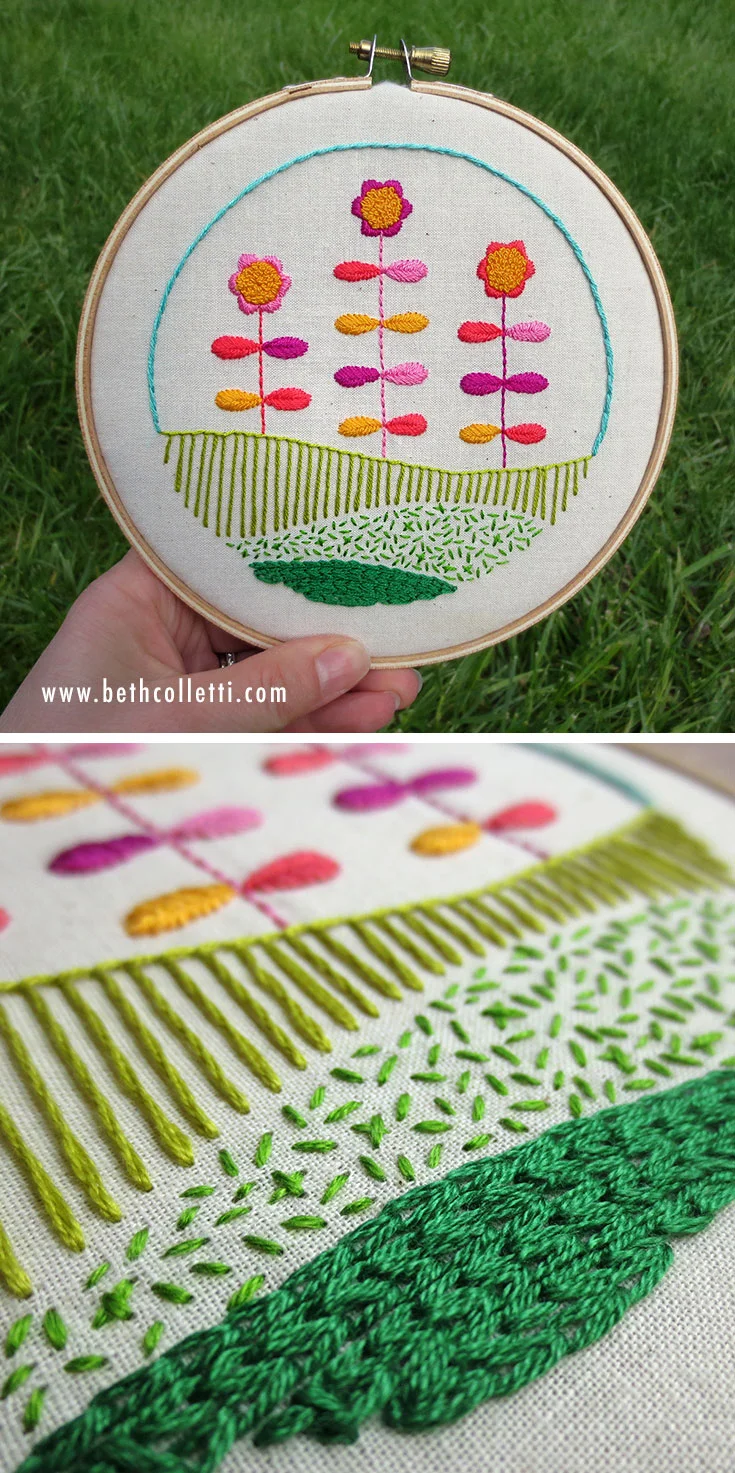Fill stitches in hand embroidery are simply a way to fill a shape with a certain stitch. The most commonly used and well-known fill stitch is probably the satin stitch, but I’m happy to share that there are so many more options to choose from if you are not a fan of the satin stitch!
Many stitches that you might assume are only for outlines can be worked close together to form varying textured fill stitches. While the list below is hardly exhaustive, each of these stitches are used as fill stitches in the free “Flower Hill” pattern featured in this post.
The Satin Stitch
A classic fill stitch, the satin stitch can be worked in virtually any shape, but is best showcased in small areas so the thread stays taut.
The French Knot Stitch
French knots are often used individually, but when stitched close together they create a wonderful, nubby texture. Once you’ve mastered this stitch, filling in an area goes pretty quickly.
The Fishbone Stitch
Great for leaves and flowers, the fishbone stitch is simply a pattern of overlapping straight stitches and much easier than you might think!
The Buttonhole Stitch
The buttonhole stitch was originally used to reinforce a buttonhole, but you can also work it decoratively to fill in a shape. Stitches can be done close together or farther apart depending on what you want your fill stitch to look like.
The Seed Stitch
A simple, but fun stitch, the seed stitch is a fill stitch that uses short, randomly placed straight stitches to fill a shape.
The Chain Stitch
The chain stitch is usually an outline stitch, but makes a gorgeous fill stitch when worked closely together. For videos and tips on using the chain stitch as a fill stitch, take a look at this article.
Ready to stitch?
I created this free hand embroidery pattern so you could practice these stitches as fill stitches. You can download it right here and give them a try. Use the stitches that are suggested for each area of the pattern, or choose your own favorite stitches to finish the design.




